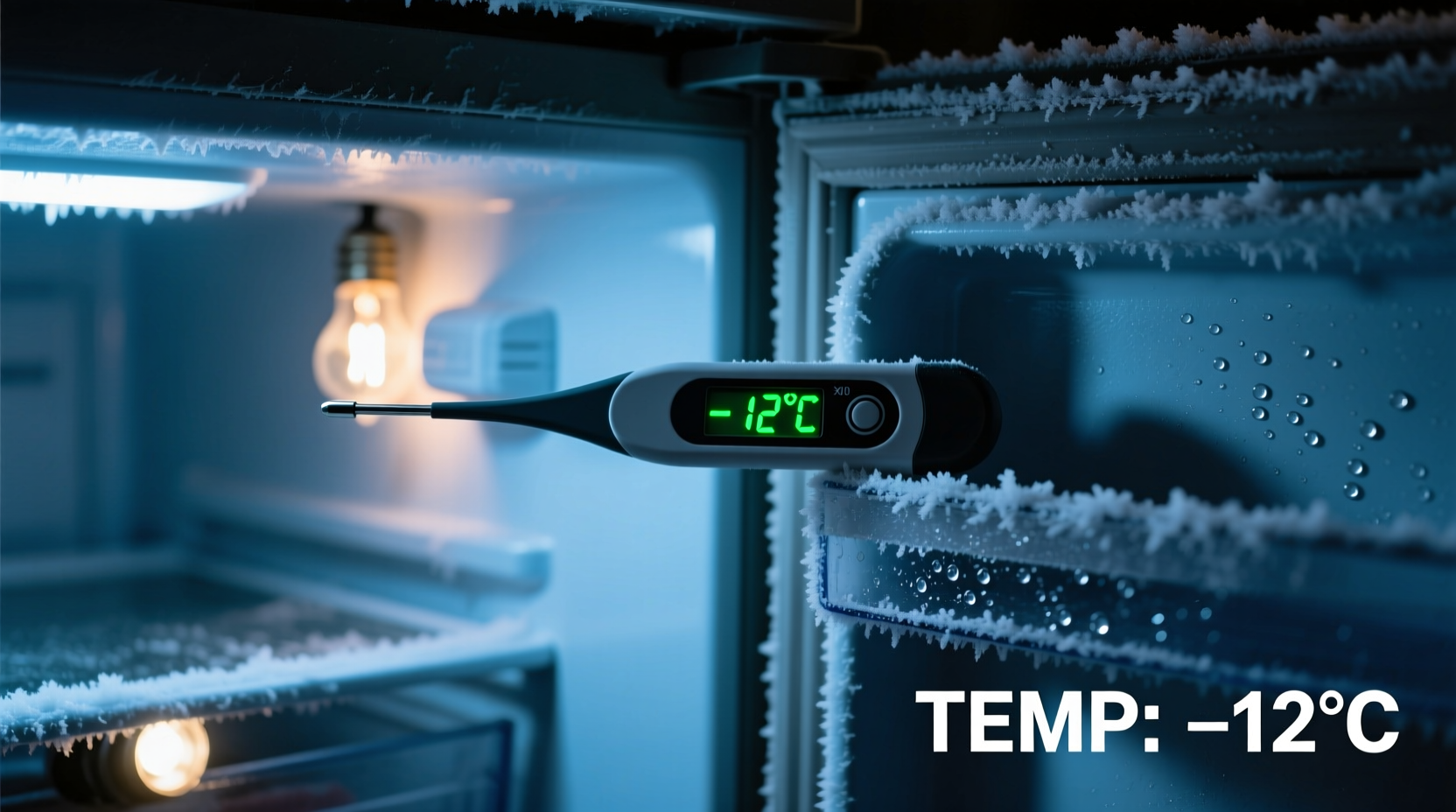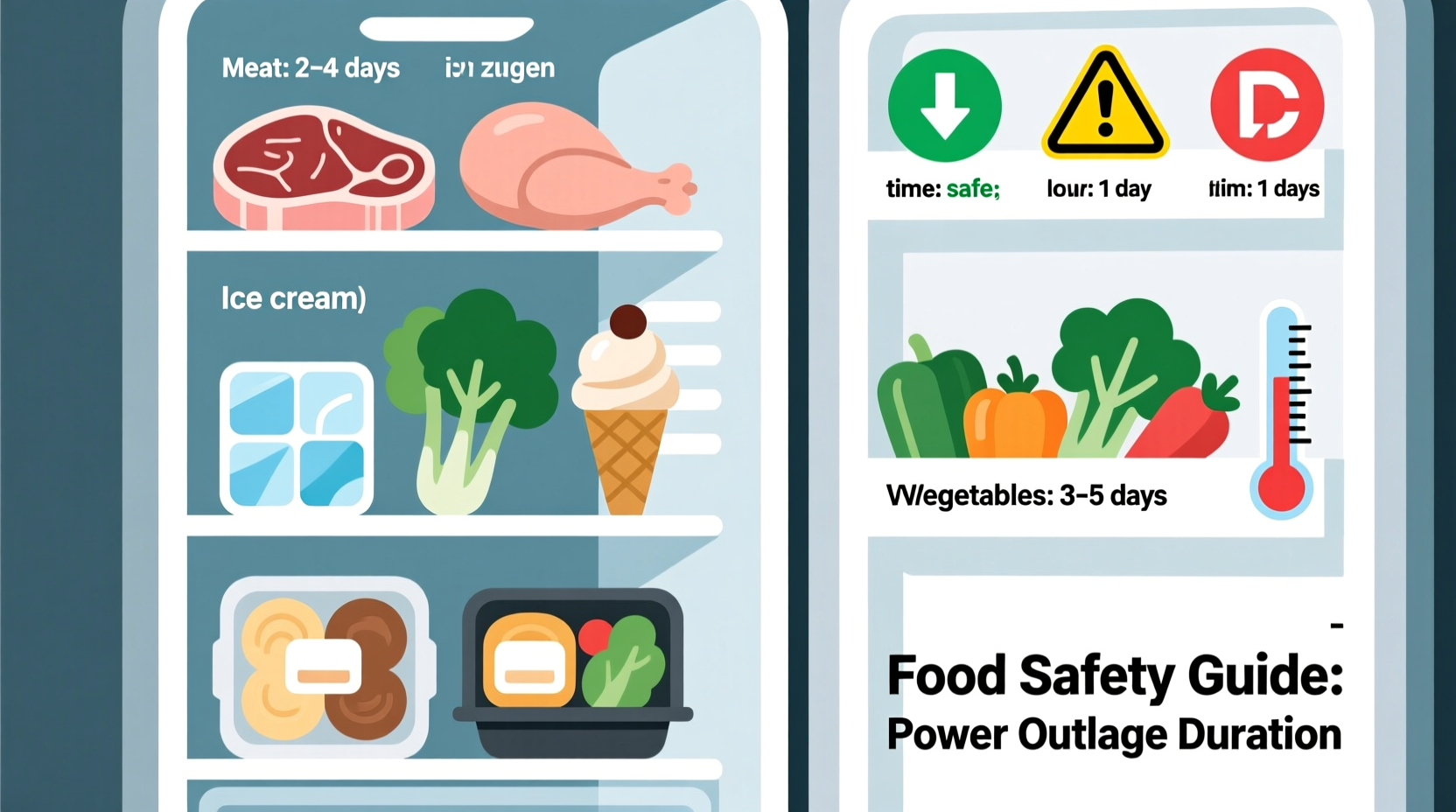When the power goes out, a full freezer keeps food safe for approximately 48 hours if the door remains closed, while a half-full freezer maintains safe temperatures for about 24 hours. Chest freezers typically preserve food longer than upright models due to better insulation and less cold air loss when opened.

Understanding Freezer Food Safety During Power Outages
When storms threaten or unexpected blackouts occur, knowing exactly how long your frozen food remains safe prevents both food waste and potential foodborne illness. This guide provides evidence-based timelines and practical steps to protect your frozen food inventory when the electricity fails.
Immediate Actions When Power Fails
The first 15 minutes after a power outage are critical for preserving your frozen food. Immediately check your freezer's temperature using a reliable appliance thermometer. If you don't have one installed, consider placing a standalone thermometer inside your freezer for future emergencies. Keep freezer doors closed as much as possible—each opening releases 50% of the cold air, significantly reducing preservation time.
Key Factors Determining Food Safety Duration
Several variables affect how long food stays safely frozen during power loss. Understanding these factors helps you make informed decisions about which items to keep and which to discard.
| Factor | Optimal Condition | Suboptimal Condition | Impact on Preservation Time |
|---|---|---|---|
| Freezer Type | Chest freezer | Upright freezer | Chest freezers maintain cold 30-50% longer |
| Freezer Fullness | Completely full | Half empty or less | Full freezers stay cold twice as long |
| External Temperature | Cool ambient temperature (60°F/15°C) | Warm ambient temperature (80°F/27°C+) | Warm environments reduce safety window by 30-40% |
| Freezer Condition | Newer model with good seals | Older model with worn seals | Poor seals can cut preservation time in half |
Realistic Timeframes for Food Safety
While the standard guidance suggests 48 hours for full freezers, actual preservation times vary based on specific conditions. The USDA Food Safety and Inspection Service provides these evidence-based guidelines:
- Full chest freezer: Up to 55 hours at 40°F ambient temperature
- Full upright freezer: Approximately 36 hours at 40°F ambient temperature
- Half-full chest freezer: About 30 hours
- Half-full upright freezer: Roughly 18 hours
These timeframes assume the freezer door remains closed. Each time you open the freezer, you reduce the safe preservation period by approximately 4 hours. During extreme heat (above 80°F), these timeframes decrease by 30-40%.
What Happens When Power Returns
When electricity is restored, don't immediately assume all food is safe. Follow this decision-making process:
- Check freezer temperature with an appliance thermometer
- Inspect food for ice crystals or firmness (food with ice crystals can be safely refrozen)
- Discard any perishable food (meat, poultry, seafood, dairy) that reached 40°F for more than 2 hours
- Use a food thermometer to check internal temperatures of questionable items
According to the FDA's food safety guidelines, any food with an internal temperature above 40°F for more than 2 hours should be discarded, regardless of appearance or odor.
Maximizing Freezer Effectiveness During Outages
Proactive measures taken before an outage significantly extend food safety windows:
- Keep freezers at least 85% full during storm seasons (fill empty space with water bottles)
- Consider investing in a chest freezer for emergency food storage (they maintain cold temperatures 30-50% longer)
- Place a dollar bill in the freezer door seal; if it falls out during an outage, you'll know the door was opened
- Use dry ice strategically (25 pounds keeps a 10-cubic-foot freezer cold for 3-4 days)
When to Discard Food After Power Restoration
Food safety experts from the USDA recommend discarding these items if they've been above 40°F for more than 2 hours:
- Raw meat, poultry, and seafood
- Milk, cream, soft cheeses, and yogurt
- Prepared foods like casseroles and leftovers
- Open containers of sour cream, cottage cheese, and dips
Foods that may be safely refrozen include ice cream (if still frozen solid), breads, cakes, fruits, and vegetables. When in doubt about food safety, follow the USDA's cardinal rule: "When in doubt, throw it out."
Special Considerations for Extended Outages
During prolonged power failures exceeding 72 hours, consider these additional strategies:
- Transfer critical frozen items to a cooler with ice or dry ice
- Group similar food items together to maintain consistent temperatures
- Place frozen items in the coolest part of your home (typically a basement)
- Consider investing in a portable power station for short-term freezer operation
Remember that food safety during power outages isn't just about time—it's about temperature. The critical threshold is 40°F, not a specific number of hours. An appliance thermometer provides the most reliable indicator of food safety.











 浙公网安备
33010002000092号
浙公网安备
33010002000092号 浙B2-20120091-4
浙B2-20120091-4